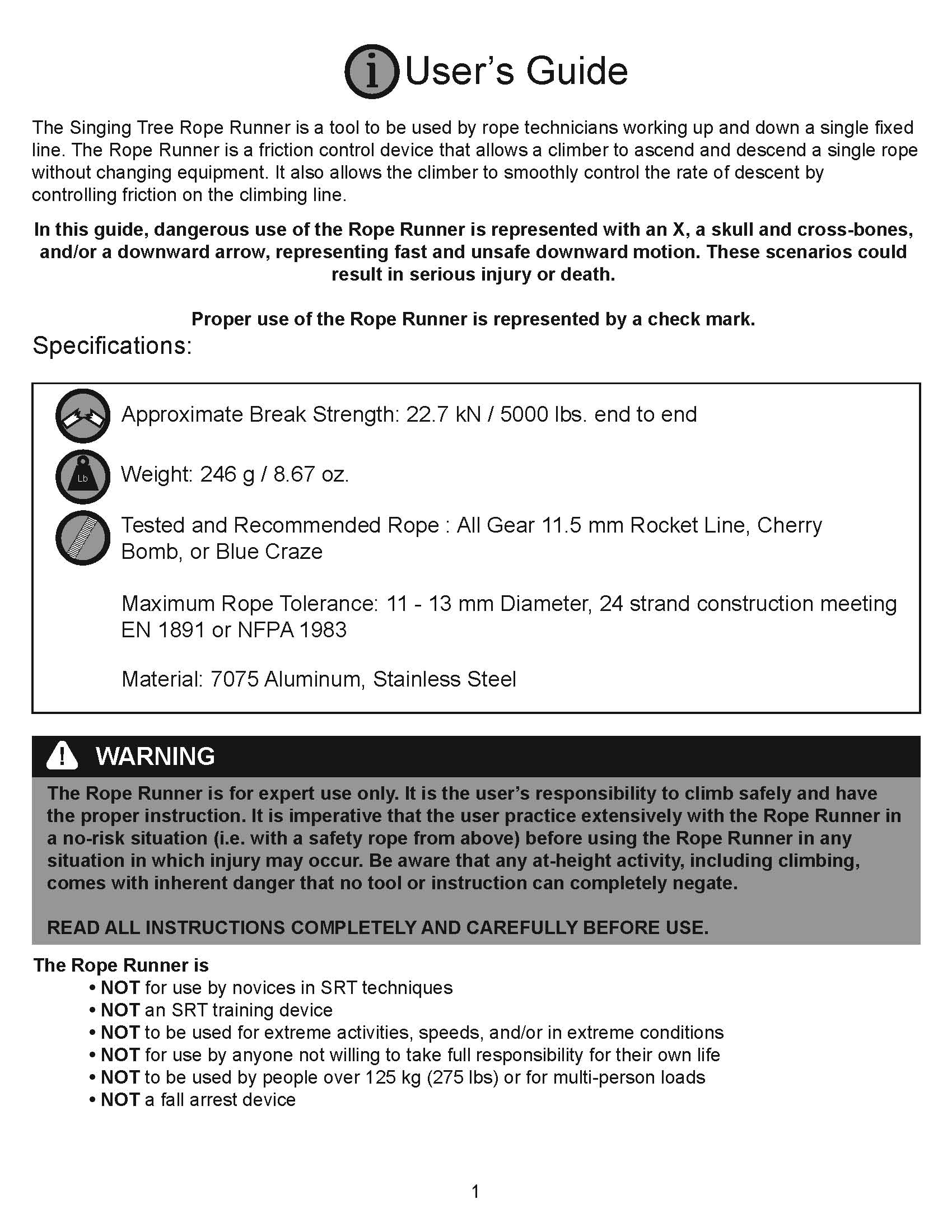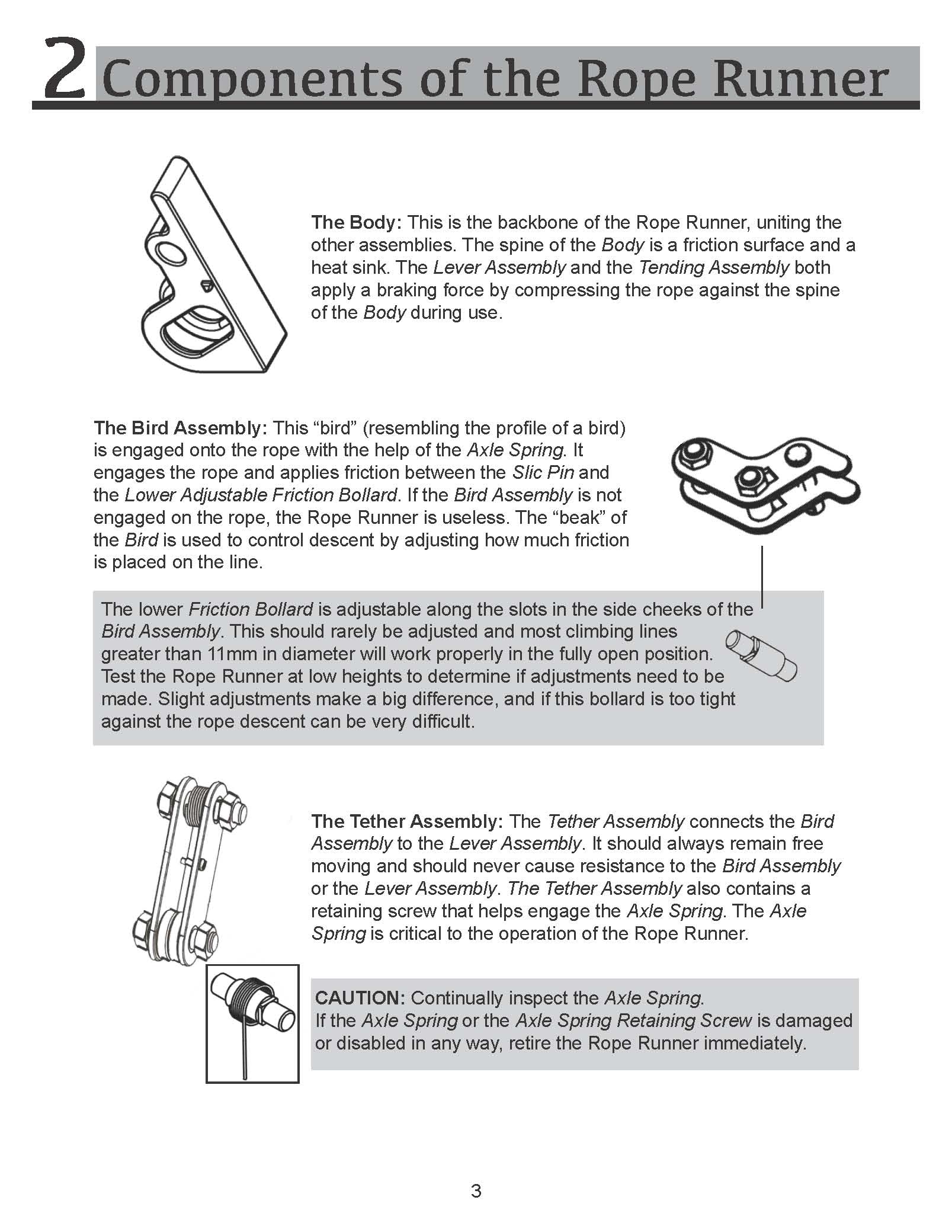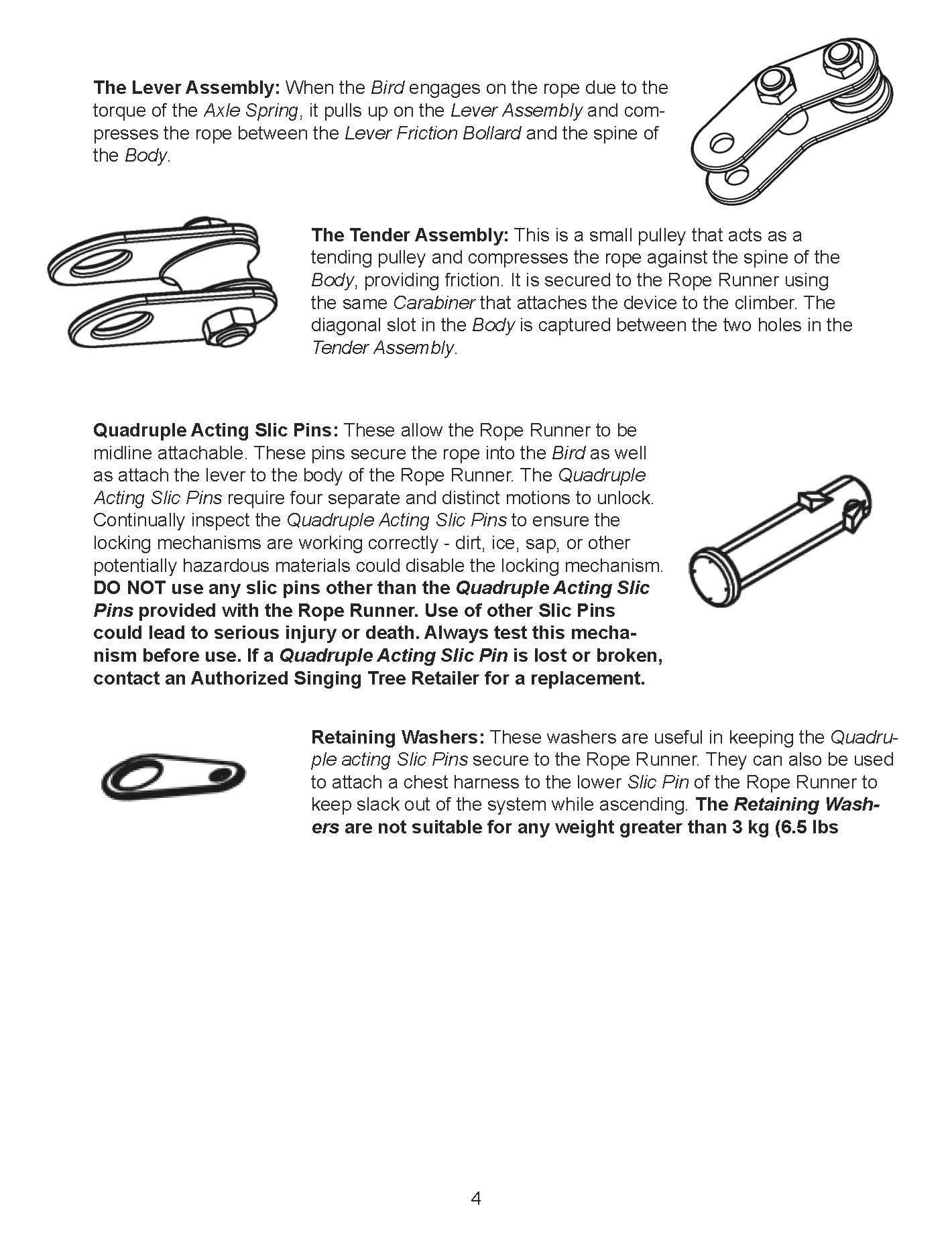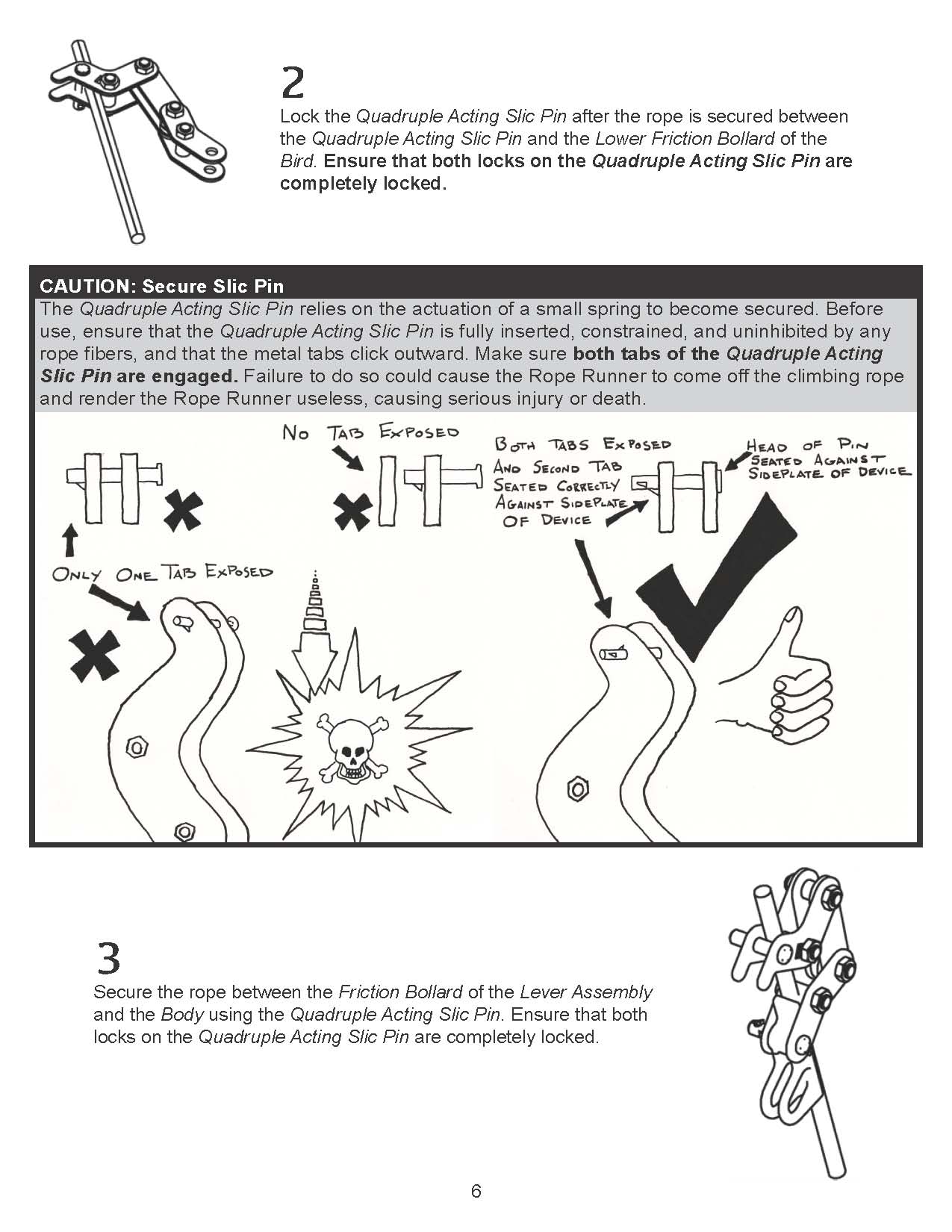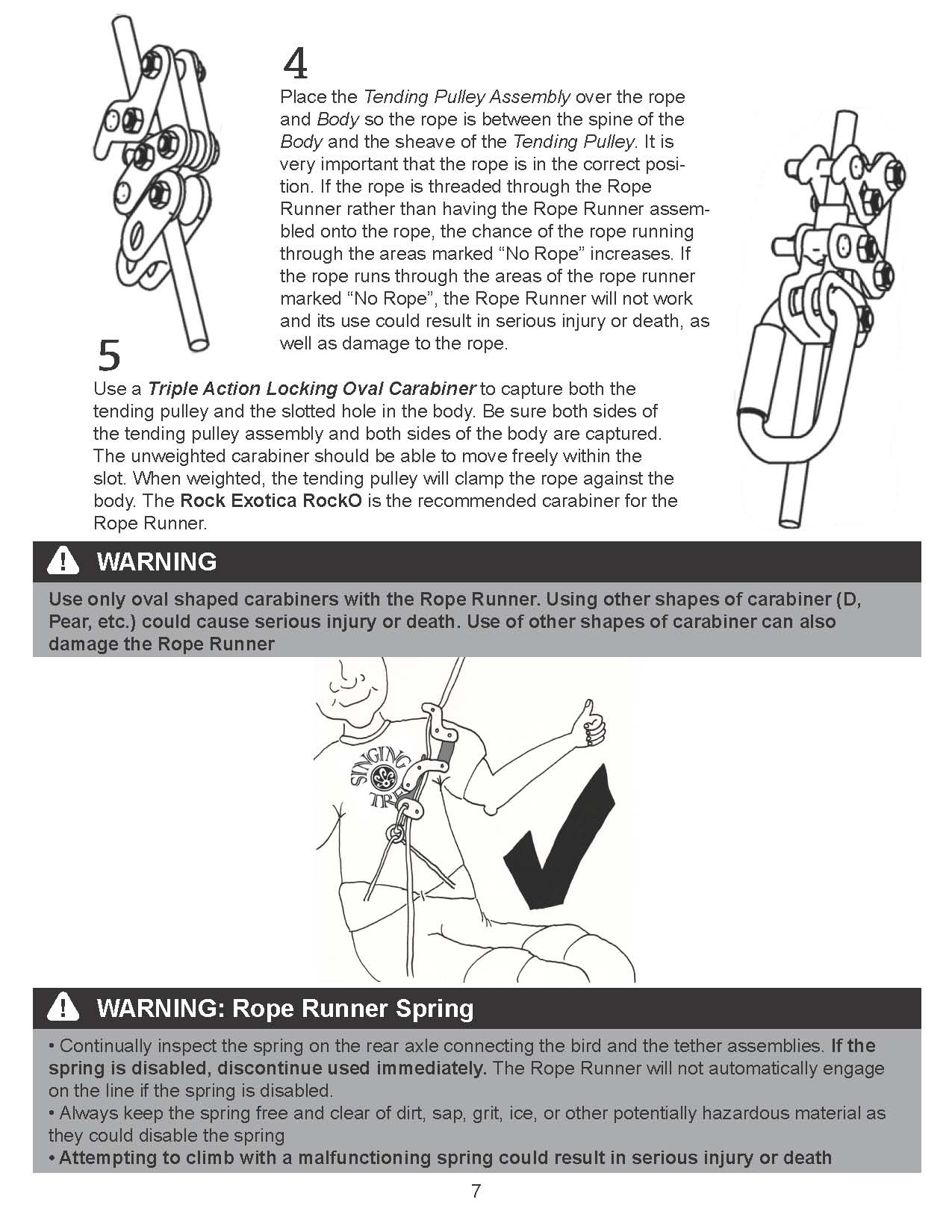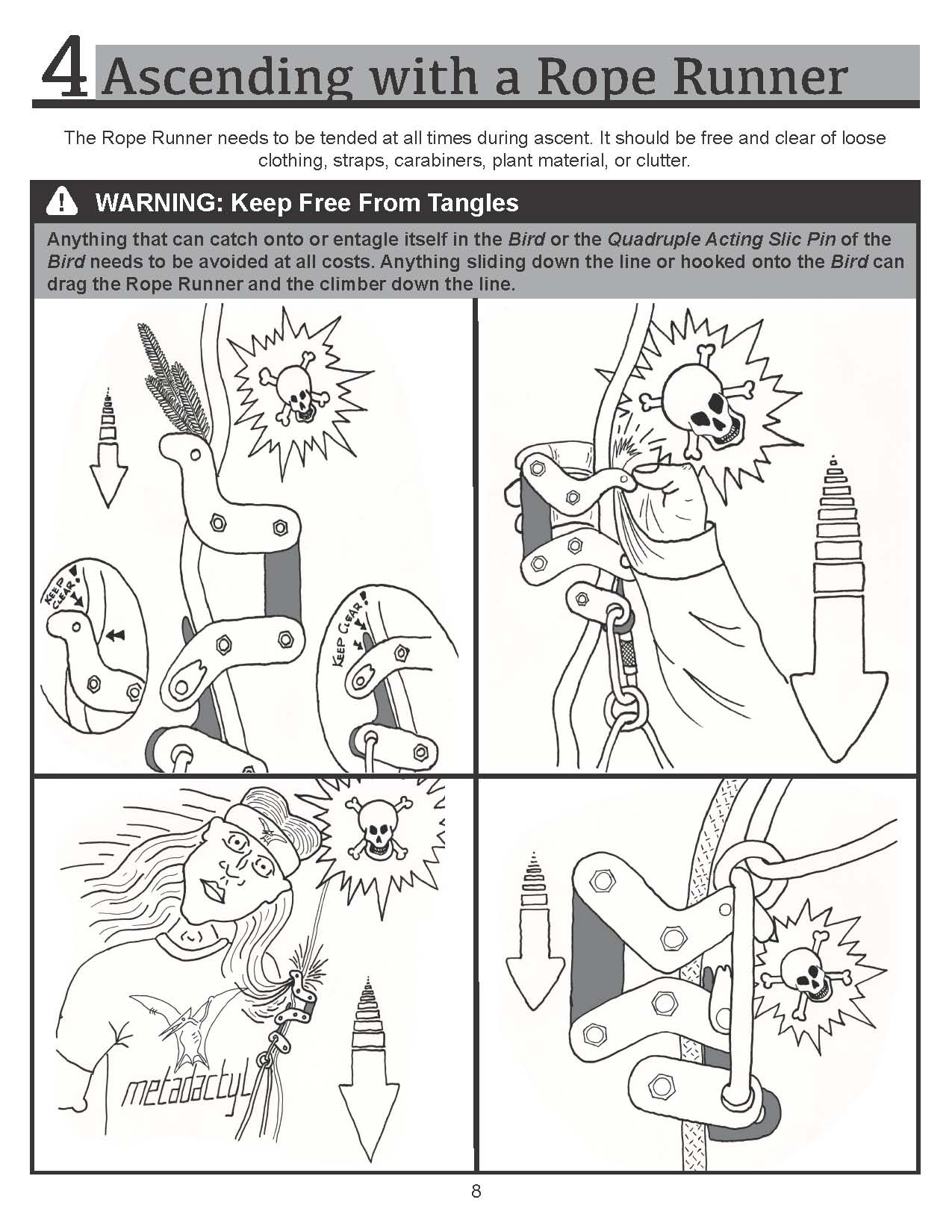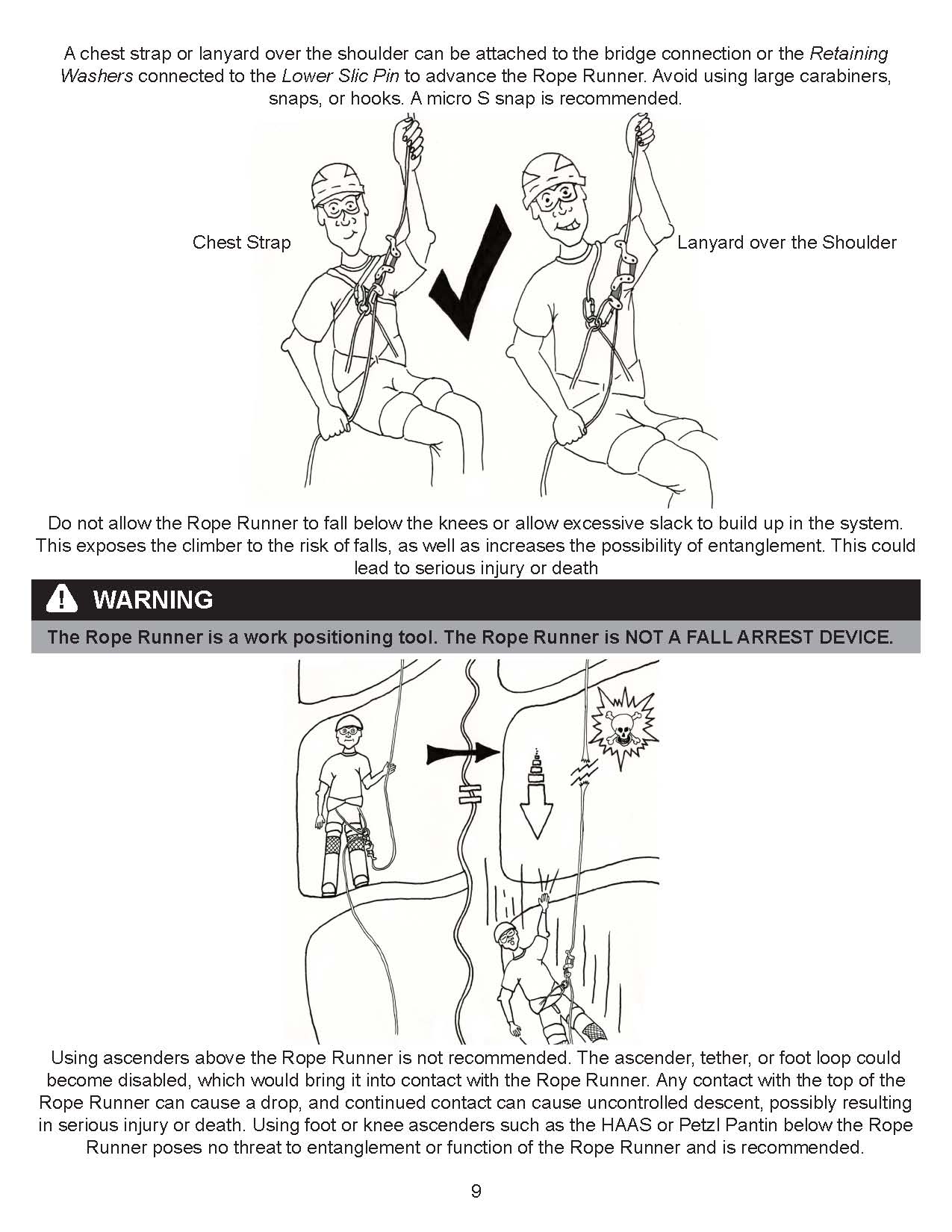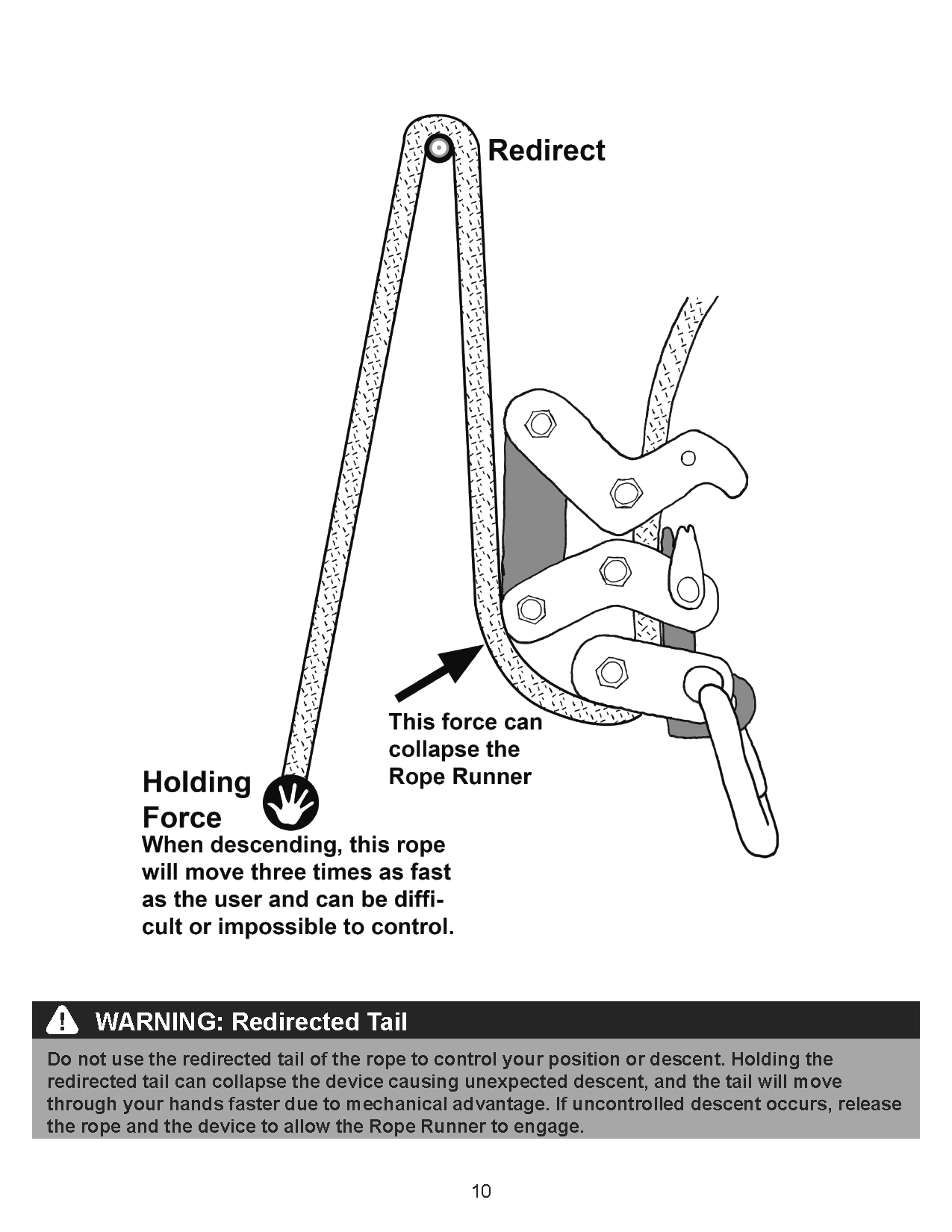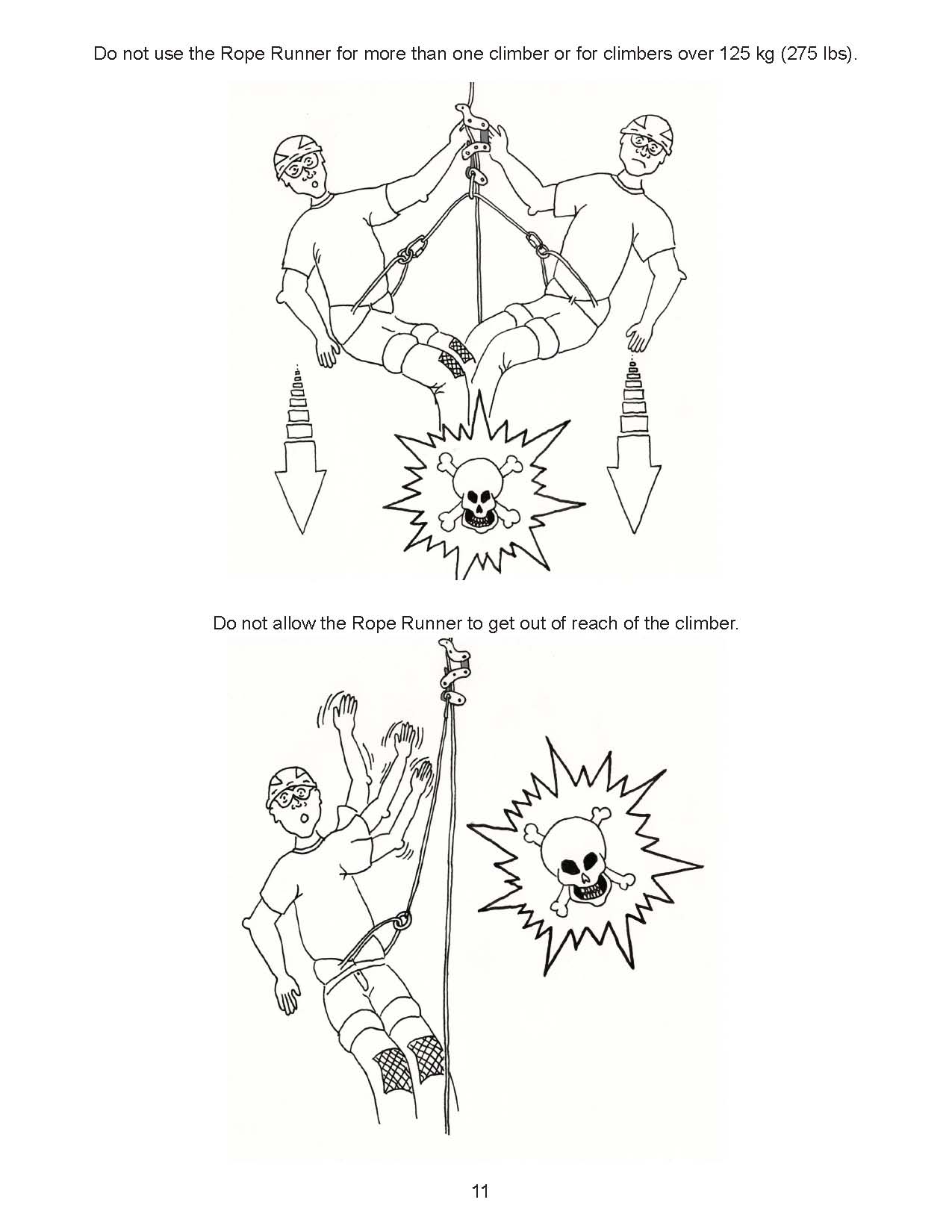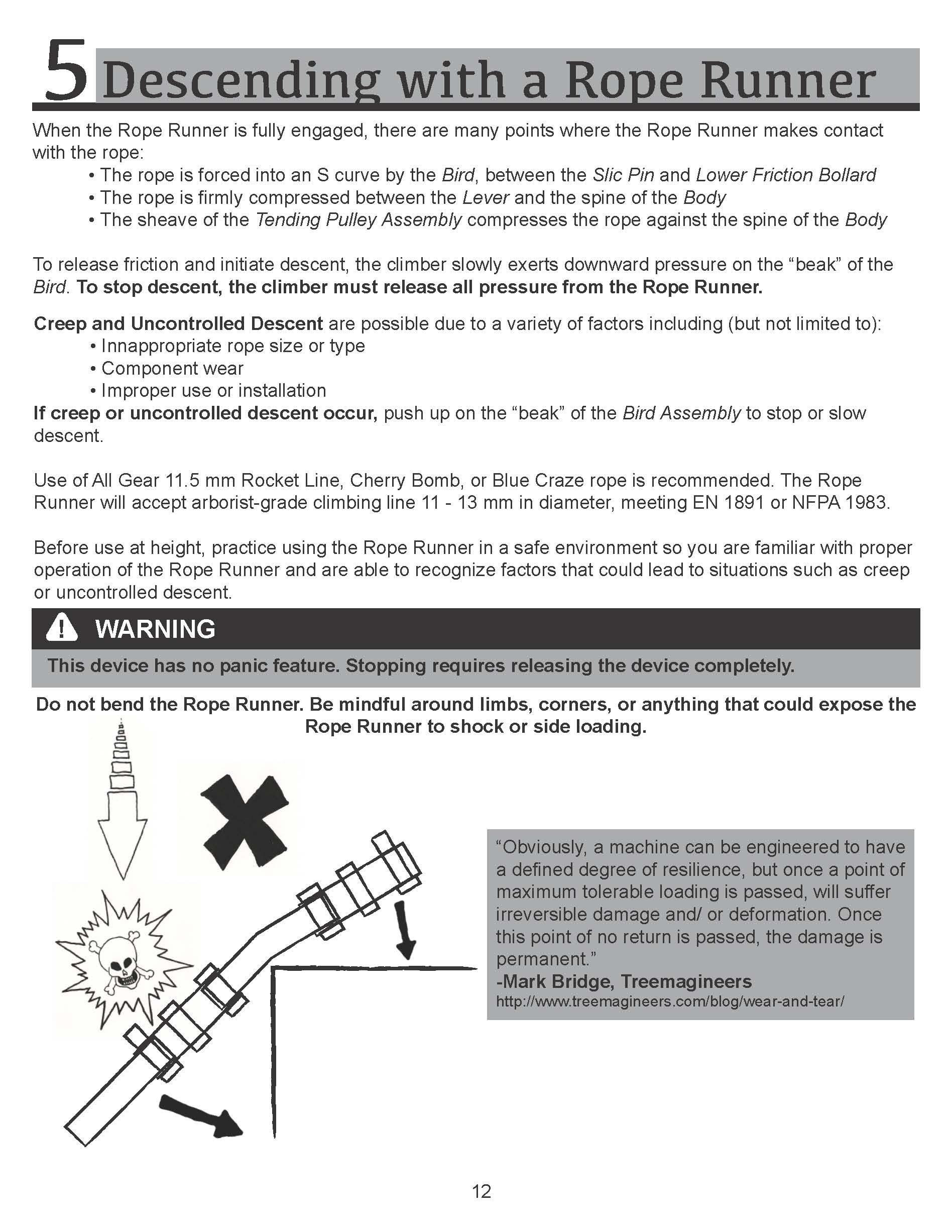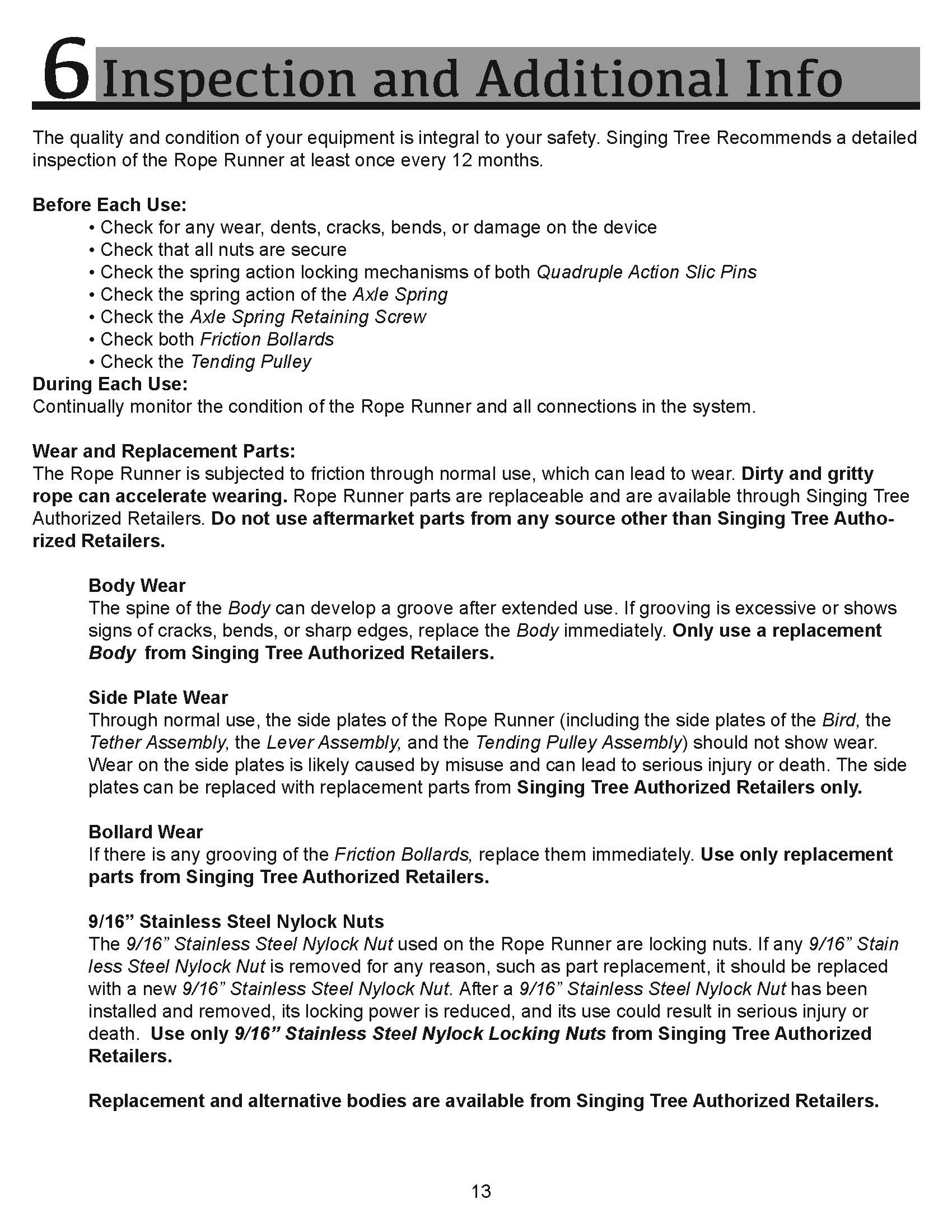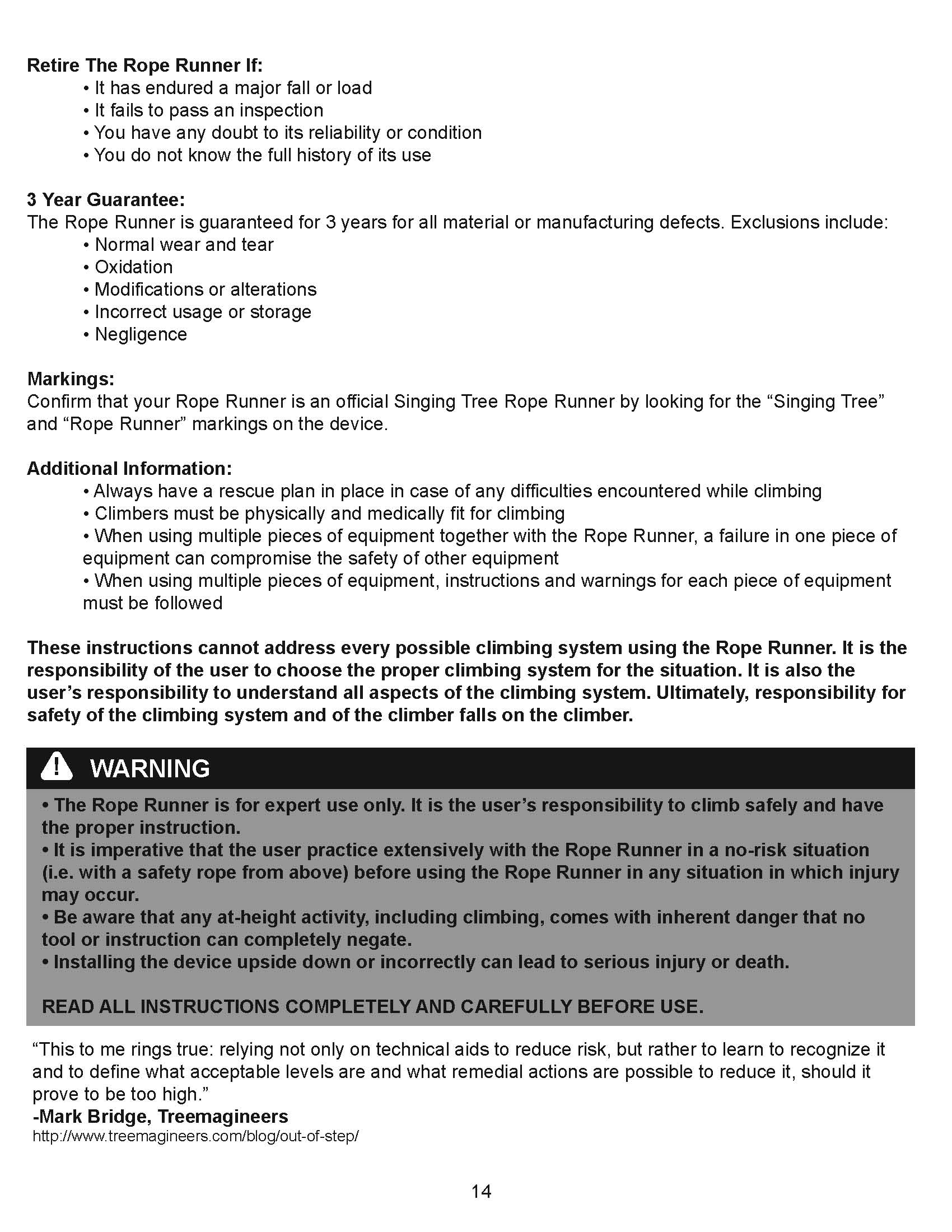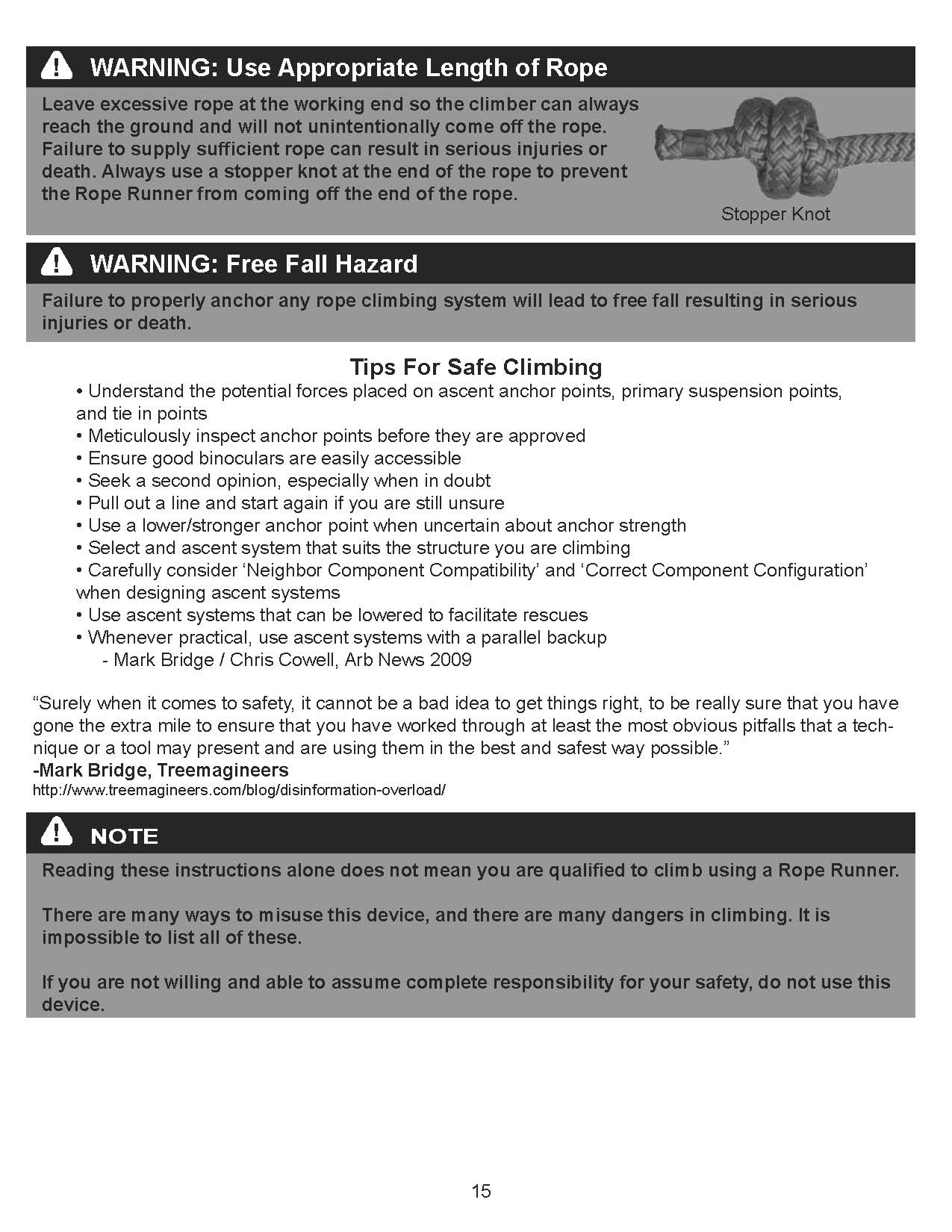Technical Details
I acquired my Singing Tree Rope Runner in 2017 as part of Bob Thrun’s collection.
The Singing Tree Rope Runner is 159 mm. tall, 75 mm. wide, 45 mm. thick, and weighs 356 g.
The Rope Runner consists of five pieces connected by removable pins, dual-shoulder bolts, and the user’s attachment carabiner. Starting at the top, the main pieces are as follows:
- Bird: The Bird consists of two parallel 3.1 mm. dog-leg aluminum stampings. At the distal end is a quadruple-acting slic pin that can be removed to admit the rope. On the dog-leg portion is an adjustable friction bollard that can be moved within rectangular slots in the side plates. The lower end is connected to the Tether assembly by a dual-shoulder bolt.
- Tether Assembly: The Tether assembly consists of two parallel aluminum links, each 85 mm. long, 25 mm. wide and 3.1 mm. thick. The dual-shoulder bolt connecting it to the Bird has a spring around it, with an arm of the spring engaging a small hole in one of the tether plates. The other end of the spring engages a hole in the bolt. The bolt rotates with the Bird. The spring acts to extend the Bird. The other end of the Tether is connected to the Lever Assembly with another dual-shoulder bolt. This bolt has a plastic spacer on it to keep the Tether plates separated.
- Lever Assembly: This consists of two slightly angled stampings. In addition to the shoulder bolt connecting the Lever to the Tether Assembly, a second shoulder bolt connects the plates at the bend. At the lower end another quadruple-acting slic pin connects the Lever to the Body. Stainless steel stampings and a short connecting chain act as a pin keeper.
- Body: The Body is milled from aluminum alloy and then anodized. It is a U-shaped channel with a cross hole for the pin connecting it to the Lever Assembly and a 32 mm. long, 15 mm. wide attachment slot angled at 45° to the body axis. A small stainless steel pin in the side of the Body limits how far the Body and Tether can rotate with respect to each other.
- Tender Assembly: The Tender is a small pulley. The arms are 70 mm. long, and the wheel has a U-shaped channel with a 30 mm. major diameter, 21 mm. minor diameter, and 12 mm. internal width.
Each side of the Bird is printed with "ROPE" and "←NO ROPE→" over the distal and proximal channels. Each side of the Tether is printed with the Singing Tree Logo. Each side of the Lever is printed with "←NO ROPE→" and "ROPE bisecting an up-pointing arrow over the the distal and proximal channels. The stepped side of the Bird is printed with "UP" and "OUT." Each side of Tender is printed with "ROPE bisecting an up-pointing arrow.
The Singing Tree Rope Runner was designed for arborists, and since I don't swing through trees, I'll let them evaluate it for their applications. For cavers and climbers, it is enough off the mainstream of designs that it doesn't fit in with normal caving ascending techniques, but it is interesting. Overall, I think that it is just a bit too complex and not nearly as efficient as a good eccentric cam ascender.
One of my first reactions was that it superficially resembled the old Bugat design from about 1975 that I had read about (Michel Beaupré, Les Bloqueurs en Spéléologie, Spéléo-Québeq v3-4, 1976-77) but never seen. As near as I can tell, the resemblance is coincidental. The Notch Equipment Rope Runner Pro is a later version of the Singing Tree Rope Runner.
CMI manufacturered the Rope Runner for Singing Tree.

For far more content, use a larger monitor and a full-width window.
Hundreds of cell phone users complained and asked me to for a simpler, mobile friendly site. In particular, they wanted me to limit each page to a small number of pictures and minimize my use of text. This new site provides what they asked for.


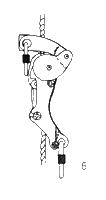 Comments
Comments
